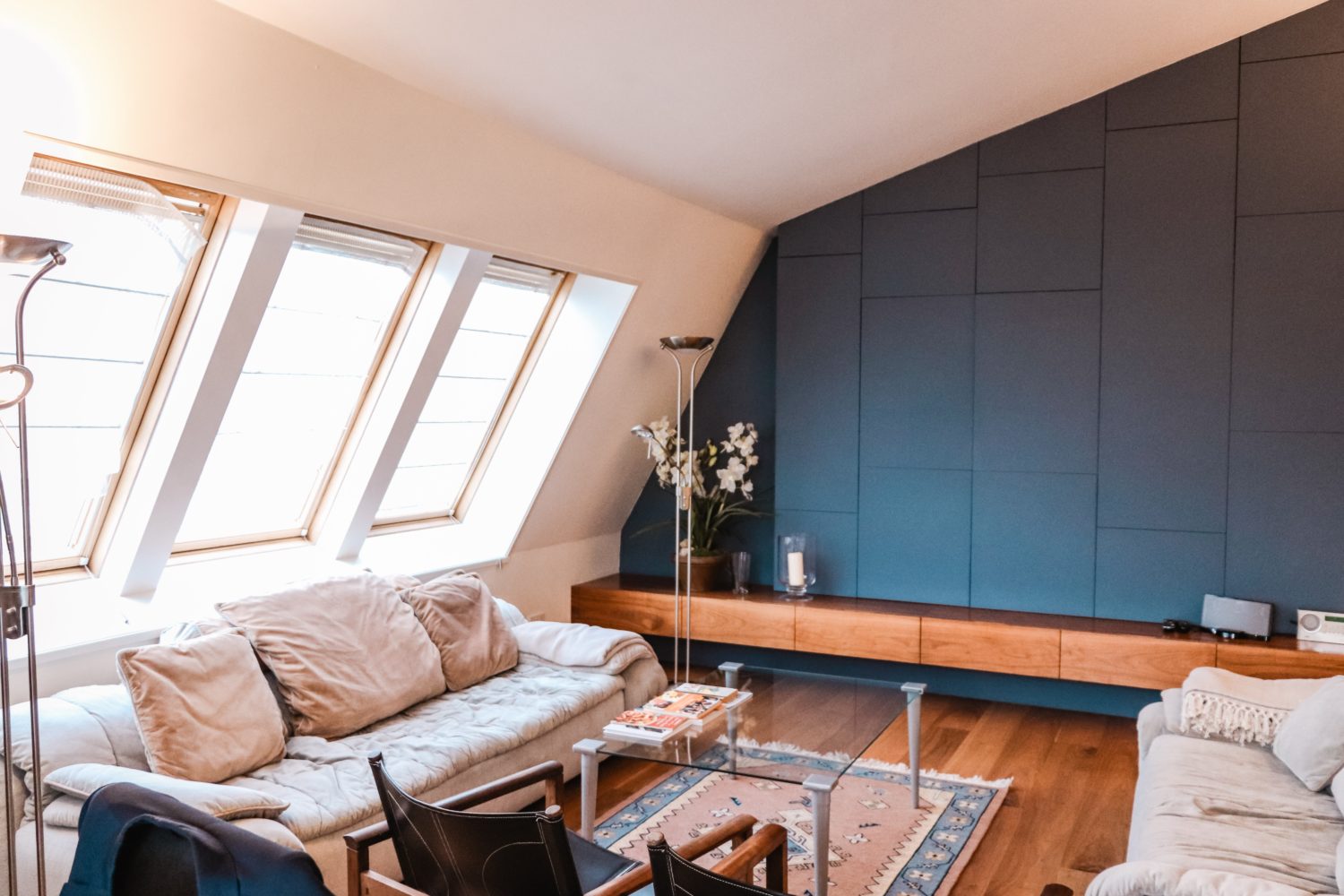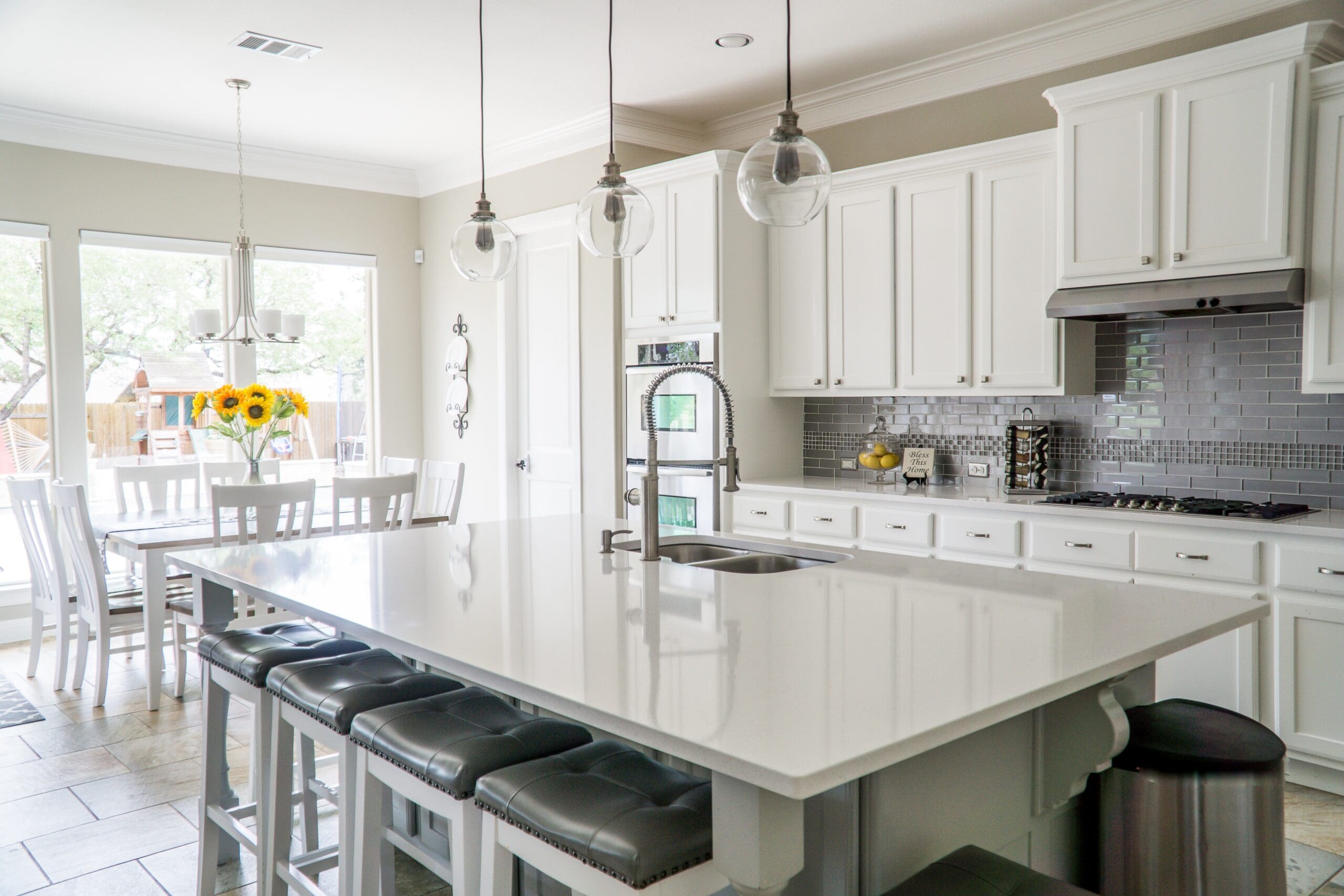
Most home sellers face the common conundrum of trying to sell their home while still living in it. A quick search of online listings will reveal the range of those showcasing uninhabited houses, obviously staged ones, and then even more obviously lived-in homes. The goal for selling a house you’re still living in, is to stage it so that it appears that you’ve already moved out and the cleaning fairies have moved in. Unfortunately, according to transaction reports from the National Association of Realtors, 56% of buyers use the proceeds from the sale of their primary residence in order to purchase their next home. So living in your house until you sell it is more often a required strategy. If you’re unable to use transitional housing, or just short on cleaning fairies, read on for our definitive guide to keep your home looking professionally staged, all while eating, sleeping, and living there. Staging is like home selling theater. It involves choosing or modifying the decor and furnishings to evoke a feeling of newness, freshness, and appeal for buyers. It’s especially important for listing photos, showings and open houses to convey what the house looks like at its best in a way that doesn’t make it seem like it’s someone else’s home. In other words, great staging will help buyers imagine what the house will be like if they lived in it. As a marketing tool in the seller’s toolkit, staging can be either DIY or professionally done. Either way, the point is to entice buyers with staging that gives your home a glossy furniture catalog feel. Staging your home while still living there is an achievable feat, but you’ll have to make some lifestyle changes. Start by changing your mindset. Your time there is very temporary so begin going through some of the motions of moving out. Be willing to give up your settled existence. These steps will help: Place your things in storage. Laura McHolm from the HuffPost says, “So, here’s the secret to a successful home stage – pretend your home is already sold and you’re moving out.” Consider the space to be your newest project, not your house. Says McHolm, “Think: It’s not your house anymore. It’s a house that will soon be their house. So get the YOU out of your house.” In a nutshell, you want to make your house look homey and inviting, but also neat, squeaky clean and with posh decorating. Present the space in an ideal way to buyers. Give it an “as-seen on HGTV home improvement show” look. Now for the hard part. Spending a weekend, decluttering, deep cleaning and putting items in storage is a great start, but maintaining the perfect staged look is another matter. After all, you — and more importantly, your family — are still living there. The good news is that with a little daily planning, keeping the charade going in time for the next showing shouldn’t be too heavy a lift. And don’t skip these finer cleaning details…buyers will notice if you do:
Depending on your budget, getting professional help could help boost your home’s appeal beyond your own efforts. Whether you decide to hire a stager or not, you definitely want to make some degree of staging investment. A recent survey by the National Association of Realtors revealed these notable benefits of home staging: How much faster can a staged home sell? In a recent HomeLight Top Agent Insights report, agents reported staged homes sell 6% to 10% quicker than unstaged homes. That same HomeLight report shows that 50% of sellers who pay for home staging spend less than $1,000 — a small price to ultimately sell your house faster and for more money. When asked her opinion about hiring professional stagers, top real estate agent Maribel Sotuyo of Houston, Texas, says, “If there’s something I would personally invest in when selling my house, this would be that thing.” While staging might appear to be an unnecessary extra expense, it’s actually often included in packages offered by Realtors. You’ll reap the benefits of staging both when buyers visit in-person and when they view photos online. Prior to the photoshoot, modify the staging in any way that will produce optimum images. For example, move bulky furniture out of small spaces or rooms and away from doorways, Sotuyo advises. Make sure all counters and surfaces are tidy and that everything looks bright and fresh. In some cases, staging can even distract buyers from noticing a home’s shortcomings. Prepare yourself and your family to be out of the house during showings and open houses. It’s an inconvenient part of the process, yet, the upside is that the less time you spend there, the cleaner everything will remain! Plan ahead for more activities outside of the home and try to have all items necessary for the excursions packed and ready ahead of time. The last thing you want to do is keep buyers waiting when they want to stop by for a showing; otherwise, they may move on to the next property. Plan day trips, outdoor picnics for lunch, and make restaurant reservations for dinner. If your budget doesn’t agree with the latter, accept any dinner invites from relatives and friends. Eating outside the home is especially helpful for reducing kitchen and dining area odors and cleaning chores. Here are some other tips to making your household scarce: Showings could be scheduled with little notice and you don’t want to be scrambling to check all the nooks and crannies to make sure they’re clean. Instead make a list of any areas that need a once over before leaving the house. Here are a few that could slip through the cracks: By following these tips you’ll be on your way to a smooth sale by showing buyers your home in its best light. You can also ensure you’ll get the highest return on your investment by using HomeLight’s Agent Match tool to get connected with a top-performing real estate agent in your market to guide you through the process.
What is staging?
Move out (Physically & Mentally)
Clean it and then keep it clean
Don’t stage your home alone
Get out of the house
Make a last-minute list

